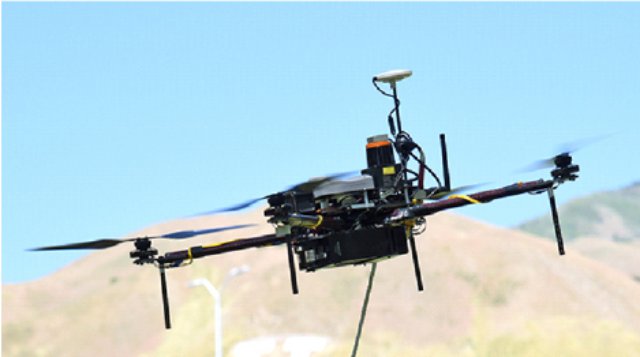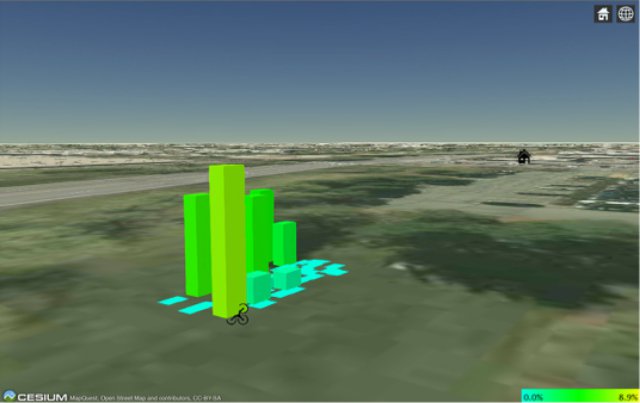NevadaNano has announced that the U.S. Army has awarded the company and the University of Utah’s DARC Lab the next round of funding for the “Autonomous Broad Spectrum Environmental Sentinels” Small Business Technology Transfer (STTR) program, started in 2014. The new funding was awarded after the partners successfully demonstrated an autonomous aerial robot with onboard chemical sensing.
For the demonstration in June, NevadaNano redesigned their Molecular Property SpectrometerTM (MPS) system to sense multiple chemicals in a small, 110-gram package. The University of Utah developed an advanced quadcopter aerial robot with up to 40-minute flight times. The robot includes LIDAR object sensing for collision avoidance, precision GPS with programmable waypoints for autonomous flight through a course at programmed altitudes, and auto take-off and auto landing capabilities. In the current project phase, the team demonstrated the aerial system flying to a suspected chemical plume, measuring the presence of hazardous gases and automatically mapping the gas plume in an interactive map on a wirelessly connected ground computer.
Ben Rogers, Principal Engineer at NevadaNano said, “MPS gas detection technology is ideally suited for an aerial application. It delivers sensitive detection of multiple gases in a small, low-power package that is easily mounted on a drone with little impact on flight endurance. MPS technology is designed to be extendible and we will continue to expand the library of gases detected, opening up exciting new applications.”
Kam K. Leang, Associate Professor of mechanical engineering and director of the Utah DARC Lab, said, “Having the opportunity to develop such a unique system that can autonomously sense and analyze dangerous gases is exciting. The robot is lightweight, compact, and easily deployed for applications in emergency response and environmental monitoring where keeping humans out of harm’s way is a top priority. We are looking forward to adding more features, developing swarming capabilities, and performing live field tests.”
In the next phase of the program, NevadaNano will improve the chemical sensor to handle a broader library of chemicals at increased sensitivities. The University of Utah will add functions for drone-to-drone communications, swarming, and automated area search so that a fleet of drones can be launched to quickly detect and map a chemical plume with minimal input from the operator.
The rapid advancement of flying robots is enabling applications in military reconnaissance, surveillance, law enforcement, hazardous waste inspection/removal, disaster response, search and rescue, and remote sensing. The Army anticipates that the technology developed in this program will be used for detecting and mapping a variety of chemicals, including air pollutants, toxic chemical leaks and spills, chemical plumes from fires, pesticides, biological agents, and chemical warfare agents.
The work described is supported by the Small Business Technology Transfer (STTR) Program and the Engineering Research and Development Center (ERDC) – Construction Engineering Research Laboratory (CERL) under Contract No. W9132T-16-C-0001.
Top Photo: Autonomous aerial robot with onboard chemical sensing
Source: Press Release


